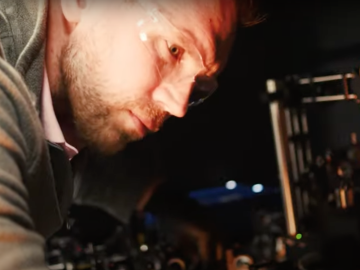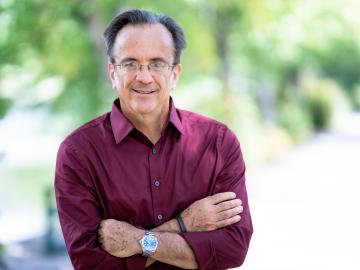
Filter News
Area of Research
- (-) Fusion and Fission (37)
- (-) Materials (61)
- Advanced Manufacturing (1)
- Biology and Environment (17)
- Computer Science (1)
- Electricity and Smart Grid (2)
- Energy Science (33)
- Functional Materials for Energy (1)
- Fusion Energy (7)
- Isotopes (5)
- Materials Characterization (1)
- Materials for Computing (10)
- Materials Under Extremes (1)
- National Security (19)
- Neutron Science (21)
- Nuclear Science and Technology (19)
- Quantum information Science (5)
- Supercomputing (38)
News Type
News Topics
- (-) Fusion (20)
- (-) Grid (3)
- (-) Machine Learning (4)
- (-) Materials Science (31)
- (-) Nanotechnology (17)
- (-) Nuclear Energy (32)
- (-) Physics (16)
- (-) Quantum Science (1)
- (-) Space Exploration (2)
- 3-D Printing/Advanced Manufacturing (13)
- Advanced Reactors (6)
- Artificial Intelligence (8)
- Big Data (2)
- Bioenergy (6)
- Biology (3)
- Biomedical (2)
- Buildings (2)
- Chemical Sciences (16)
- Clean Water (2)
- Composites (3)
- Computer Science (14)
- Coronavirus (1)
- Critical Materials (1)
- Cybersecurity (3)
- Education (1)
- Energy Storage (16)
- Environment (12)
- Exascale Computing (2)
- Frontier (3)
- High-Performance Computing (5)
- Irradiation (1)
- Isotopes (8)
- ITER (3)
- Materials (41)
- Mathematics (1)
- Microscopy (13)
- Molten Salt (1)
- National Security (1)
- Neutron Science (14)
- Partnerships (4)
- Polymers (6)
- Quantum Computing (2)
- Security (3)
- Simulation (3)
- Summit (1)
- Transportation (7)
Media Contacts

To achieve practical energy from fusion, extreme heat from the fusion system “blanket” component must be extracted safely and efficiently. ORNL fusion experts are exploring how tiny 3D-printed obstacles placed inside the narrow pipes of a custom-made cooling system could be a solution for removing heat from the blanket.

A study led by researchers at ORNL could help make materials design as customizable as point-and-click.

ORNL, TVA and TNECD were recognized by the Federal Laboratory Consortium for their impactful partnership that resulted in a record $2.3 billion investment by Ultium Cells, a General Motors and LG Energy Solution joint venture, to build a battery cell manufacturing plant in Spring Hill, Tennessee.

ORNL manages the Innovation Network for Fusion Energy Program, or INFUSE, with Princeton Plasma Physics Laboratory, to help the private sector find solutions to technical challenges that need to be resolved to make practical fusion energy a reality.

Muralidharan was recognized for “a highly prolific spirit of innovation in creating or facilitating outstanding inventions that have made a tangible impact on the quality of life, economic development and welfare of society.”

More than 50 current employees and recent retirees from ORNL received Department of Energy Secretary’s Honor Awards from Secretary Jennifer Granholm in January as part of project teams spanning the national laboratory system. The annual awards recognized 21 teams and three individuals for service and contributions to DOE’s mission and to the benefit of the nation.

Neuromorphic devices — which emulate the decision-making processes of the human brain — show great promise for solving pressing scientific problems, but building physical systems to realize this potential presents researchers with a significant

Ten scientists from the Department of Energy’s Oak Ridge National Laboratory are among the world’s most highly cited researchers, according to a bibliometric analysis conducted by the scientific publication analytics firm Clarivate.

ORNL's Larry Baylor and Andrew Lupini have been elected fellows of the American Physical Society.

Diego Del-Castillo-Negrete, a distinguished staff member in the Fusion Energy Division, was cited for Outstanding Technical Achievement – National Laboratory. He will be recognized during the GMiS annual conference, which will be held virtually Oct. 11-22. The HENAAC awards program is in its 33rd year.


